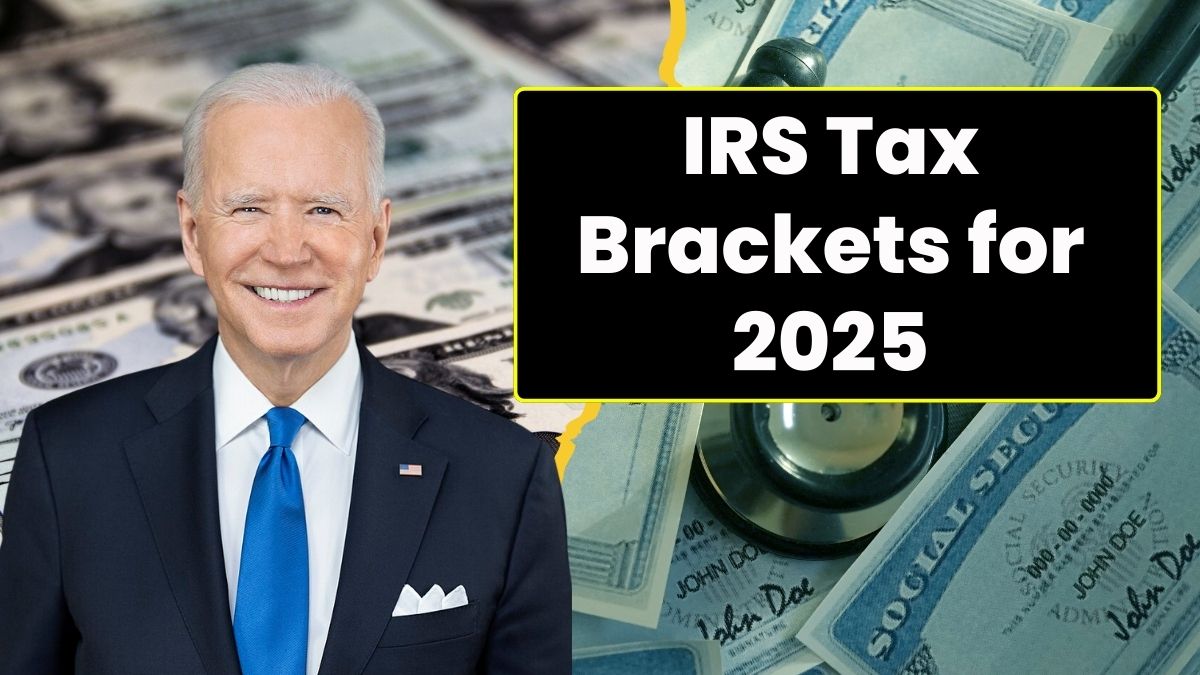IRS Tax Brackets for 2025 : Every year, the Internal Revenue Service (IRS) adjusts tax brackets to account for inflation, and the 2025 tax year is no different. Taxpayers should still expect significant updates, especially in the way they are taxed, even though the changes are not as drastic as in the past.
A detailed look at the new IRS tax brackets for 2025, including income thresholds, deductions, and other key provisions, can be found here.
Why IRS Tax Brackets Adjust Annually
The IRS adjusts federal tax brackets every year to prevent “bracket creep.”
If this adjustment weren’t made, taxpayers would be forced into higher tax brackets due to wage increases that don’t reflect real increases in purchasing power.
For these adjustments, the IRS uses the chained Consumer Price Index (CPI), a measure that incorporates changes in consumer behavior and shifting costs.
IRS tax bracket adjustments for 2025
In 2025, the IRS is expected to adjust tax brackets upward by 2.8%, a smaller increase than in 2024 and 2023, when it increased by 5.4% and 7.1%, respectively. After the COVID-induced high inflationary period, this adjustment reflects a gradual return to more typical inflation rates.
The following table shows the projected tax brackets for 2025 based on current inflation estimates.
| Tax Rate | Single Filers | Married Filing Jointly | Head of Household |
|---|---|---|---|
| 10% | $0 – $11,925 | $0 – $23,850 | $0 – $17,000 |
| 12% | $11,925 – $48,000 | $23,850 – $96,950 | $17,000 – $72,000 |
| 22% | $48,000 – $103,000 | $96,950 – $206,500 | $72,000 – $155,000 |
| 24% | $103,000 – $185,000 | $206,500 – $366,000 | $155,000 – $306,000 |
| 32% | $185,000 – $420,000 | $366,000 – $450,000 | $306,000 – $480,000 |
| 35% | $420,000 – $523,000 | $450,000 – $628,000 | $480,000 – $600,000 |
| 37% | Over $523,000 | Over $628,000 | Over $600,000 |
Note: When the IRS announces the 2025 tax brackets later in the year, these figures may change.
Key Changes to Expect in 2025
Increase in the standard deduction
Additionally, the IRS is expected to increase the standard deduction in 2025, giving taxpayers greater flexibility in reducing their taxable income. Estimated increases are as follows:
- A standard deduction of $15,000 will be available to single filers in 2024, up from $14,600.
- Married couples filing jointly will be able to deduct $30,000, up from $29,200 in 2024.
- The standard deduction for heads of households has increased to $22,500 from $21,900.
Adjustments to capital gains taxes
Tax rates on capital gains are also subject to adjustment, particularly for those who sell investments. Inflation is likely to shift the thresholds for each of the long-term capital gains rates upward. Your investment profits may be taxed at lower rates as a result.
Changes to Tax Credits
Inflation typically impacts key credits such as the Earned Income Tax Credit (EITC) and Child Tax Credit (CTC) even though the IRS hasn’t officially announced changes for 2025.
EITCs, for example, help low-income workers reduce their tax liabilities, and these credits are often adjusted for inflation annually.
Your Taxes Will Be Affected by These Changes
- Increasing the thresholds for each tax bracket will allow taxpayers to earn more without being forced into higher tax rates. As an example, a single filer earning $48,000 in 2025 will likely face a top marginal tax rate of 12%, down from 22% previously.
- With a higher standard deduction, more of your income will go untaxed, lowering your overall taxable income.
- Because of the smaller inflation adjustment for 2025, your taxes may decrease slightly, but not as dramatically as in 2023 and 2024, when inflationary pressures were higher.
Tips for tax planning in 2025
There are several strategies you can use to take advantage of the new tax brackets in 2025, even though they won’t be effective until January 2025:
- In 2026, adjusting your withholding can help you avoid a surprise tax bill if your income increases. Using the IRS Withholding Estimator, you can find out how much you need to withhold.
- Contribute to tax-deferred accounts such as 401(k)s and IRAs to minimize your taxable income. As tax bracket thresholds rise, this strategy becomes even more advantageous.
- You can reduce your taxable income by making charitable donations before the end of 2024, especially if you’re close to a higher tax bracket.
Final thoughts
IRS Tax Brackets for 2025 : With a projected 2.8% increase in income thresholds in 2025, the IRS tax brackets will change modestly compared to previous years. In combination with higher standard deductions, these adjustments give taxpayers more tax sheltering options.
You can optimize your tax strategy for the coming year by planning ahead and understanding how these changes impact your financial situation.










